Pest Control for Stinging Insects
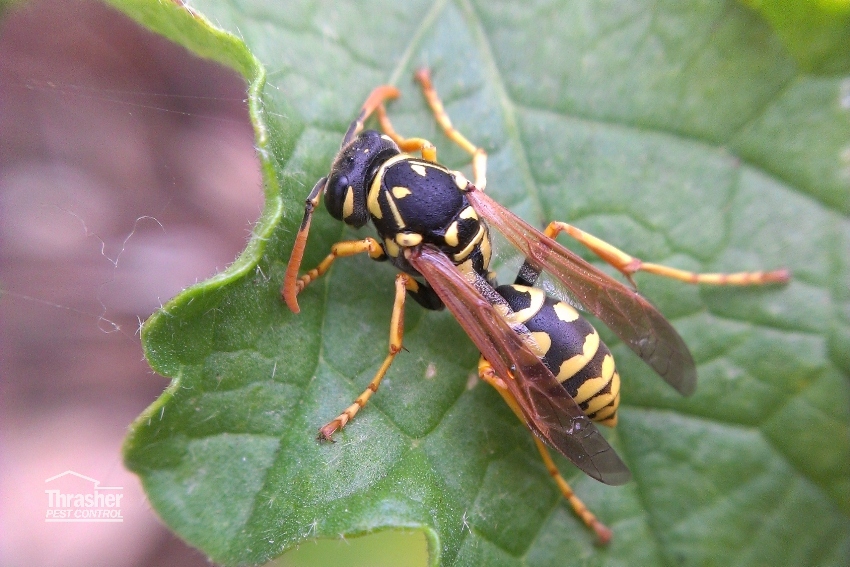
Stinging Insect Control in San Diego | Bees, Wasps, Hornets
With its warm climate and beautiful landscape, San Diego is a paradise for residents and tourists alike but the great outdoors can quickly turn unpleasant when stinging insects are around. Wasps, bees, and hornets are common in San Diego County and become an issue if their populations go uncontrolled. Thrasher Pest Control provides excellent stinging insect control in San Diego. We're happy to help rid your property of bees, wasps, hornets, and other stinging insects. Call us at 619-955-5121 to discuss your bee or wasp issue.
The Dangers of Stinging Insects
Stinging insects cause painful stings that may lead to localized swelling, redness, and itching. However, for some individuals, these stings result in severe allergic reactions that require immediate medical attention. Anaphylaxis, a potentially life-threatening condition, may occur in sensitive individuals and should always be taken seriously.Stinging Insects in San Diego
Wasps
Wasps are a common in San Diego, adding to the diverse insect population found in the region. Known for their vibrant colors, and distinctive buzzing sounds, wasps can be fascinating to observe. Many wasp species are beneficial to plants--they pollinate flowers and prey on plant-eating insects.
However, it's important to recognize that they pose a threat to you and your family when they are agitated or disturbed. Wasps can sting many times. Additionally, they release an attack pheromone that brings other wasps in on the attack.
You'll see various types of wasps and wasp nests around San Diego. If you need a wasp nest removed, call the professionals. Thrasher Pest Control has the training and equipment to remove a wasp nest without getting stung.
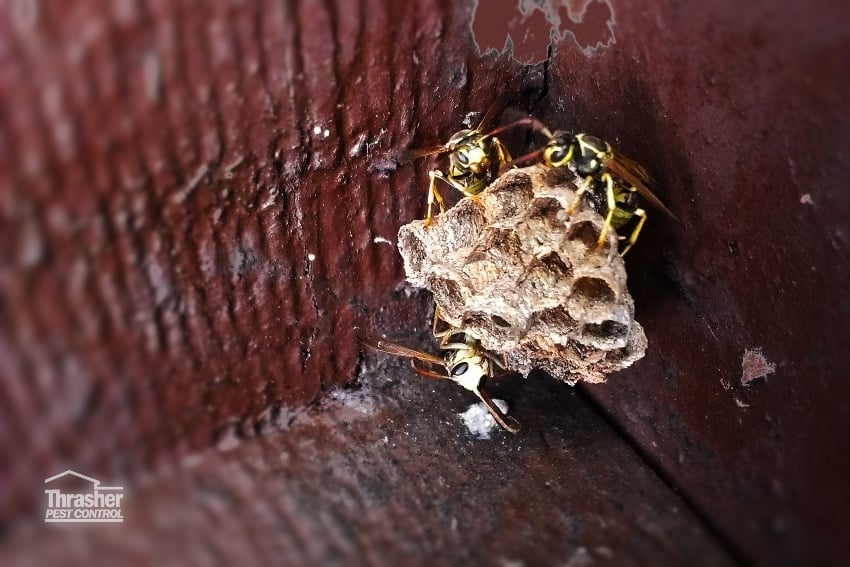
Mud Daubers
Mud daubers, also known as mud wasps, are a type of solitary wasp found in San Diego. Mud daubers construct cylindrical nests made of mud, which they attach to structures such as walls, eaves, or even tree branches. Unlike social wasps, mud daubers are not aggressive and rarely sting humans unless directly threatened. They are beneficial predators, feeding on spiders and other small insects.
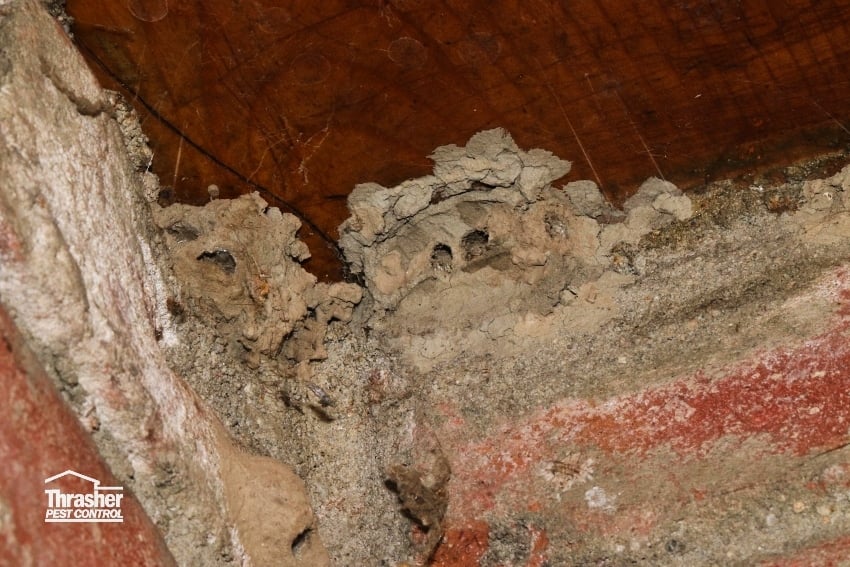
Bald Faced Hornets
Bald-faced hornets inhabit various regions of North America, including San Diego, where their distinctive appearance and behavior make them a notable presence. Recognizable by their contrasting black and white coloration, these aerial wasps construct intricate paper nests in trees, shrubs, and sometimes on structures.
While they contribute to ecosystem balance by preying on other insects, their aggressive defense of their nests can pose challenges in urban and suburban areas. Due to the potential risks associated with stings, especially for those with allergies, it's recommended to exercise caution around their nests and seek professional assistance with wasp nest removal.
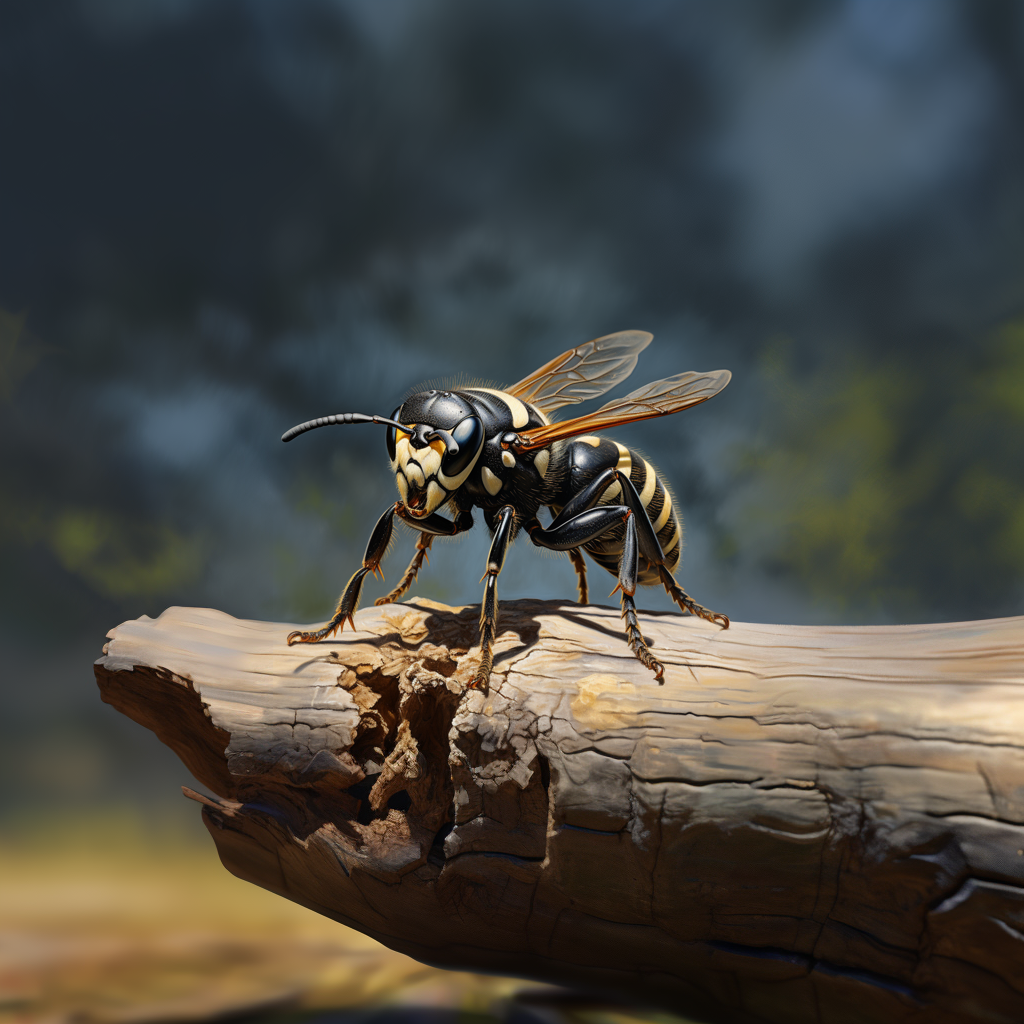
Bees
Bees play a vital role in San Diego's ecosystem, contributing to pollination that supports the growth of various plant species and agricultural crops. The region is home to diverse bee species, each adapted to the unique climate and flora of Southern California. From the iconic honeybee to native solitary bee species, these pollinators help sustain the local environment and food production. While solitary bees are generally beneficial and docile, honeybees are beneficial AND can be agressive. They will sting if necessary to protect the hive or each other. Individuals with allergies are advised to be very cautious around all bee species.
Read More about Bees: Africanized Honey Bees
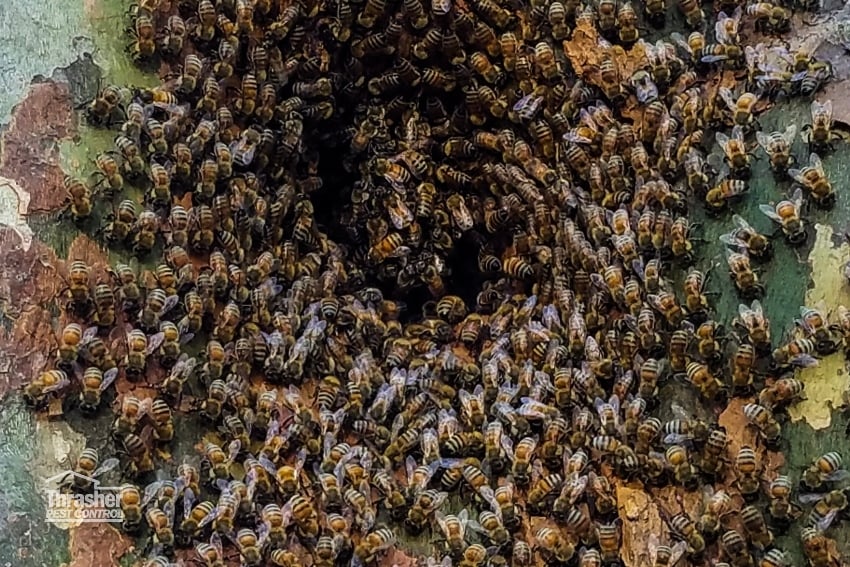
FAQ about Stinging Insect Control
1. Why is stinging insect control important?
Stinging insects like wasps, bees, and hornets can pose significant threats to human health and safety. Their stings may cause allergic reactions ranging from mild irritation to severe anaphylactic shock, which can be life-threatening for some individuals. Moreover, when stinging insects establish nests near homes or buildings the potention for stings increase.
2. Can I handle stinging insect control on my own?
Dealing with stinging insects can be dangerous and is best left to professionals. Untrained individuals attempting to remove nests or eliminate stinging insects themselves could provoke aggressive behavior and increase the risk of stings. Professionals have the right equipment, knowledge, and experience to handle these situations safely and effectively.
3. What are the risks of stinging insect stings?
Stinging insect stings can cause a range of reactions, from localized pain, swelling, and itching to severe allergic reactions that may lead to anaphylaxis. Anaphylaxis is a serious, potentially life-threatening allergic reaction that requires immediate medical attention. Those with known allergies to insect stings are at a higher risk, and stings around sensitive areas like the mouth, nose, or throat can be particularly dangerous.
4. How does a pest control service get rid of stinging insects?
Thrasher starts with a quality inspection to identify the type of stinging insect. After the inspection, our expert Thrasher pest technicians match the treatment to the insect: bees, wasps, or hornets. They then followup to ensure the colony has been controlled.
5. How quickly can stinging insect control professionals respond to an infestation?
Quickly! Because of the danger to people, we make stinging insect treatment a high priority. Our response time can vary depending on the time of year. The best way to find out our availability is to give us a call or send in a contact form and one of our representatives will be in touch.
6. Who Do I Call for Wasp Stinging Insect Control?
That's easy. Thrasher Pest Control.






